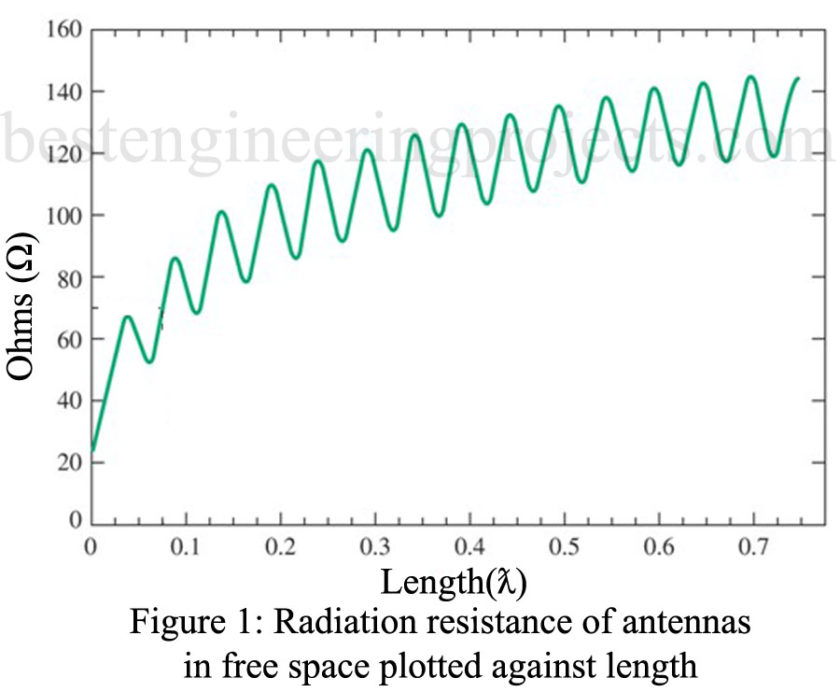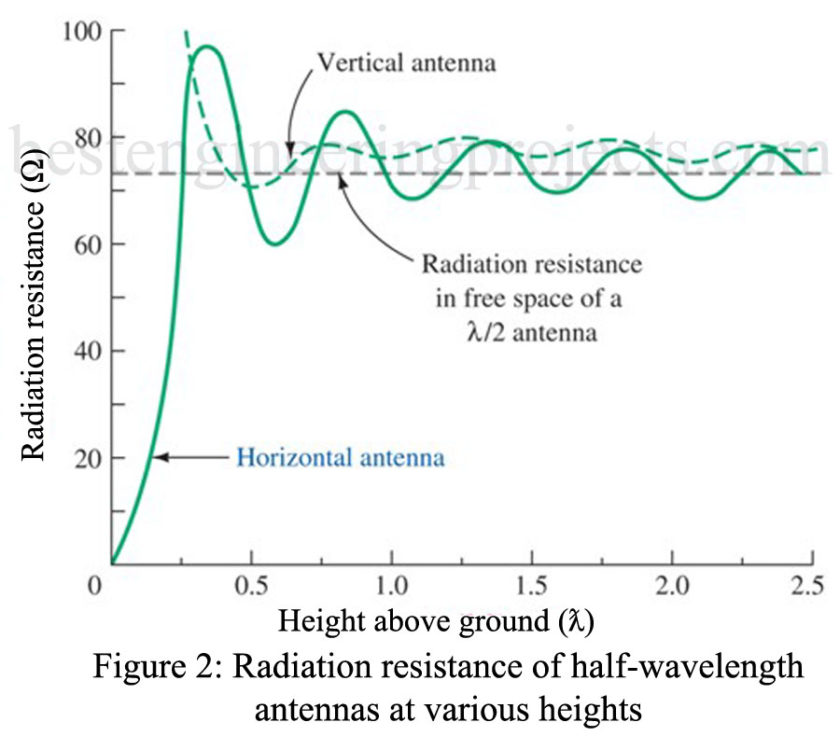The portion of an antenna’s input impedance that is the result of power radiated into space is called the antenna radiation resistance, Rr. It should be noted that R, is not the resistance of the conductors that form the antenna. It is simply an effective resistance that is related to the power radiated by the antenna. Since a relationship exists between the power radiated by the antenna and the antenna current, radiation resistance can be mathematically defined as the ratio of total power radiated to the square of the effective value of antenna current, or
Where Rr = antenna radiation resistance ()
I = effective rms value of antenna current at the feed point (A)
P = total power radiated from antenna
It should be mentioned at this point that not all of the energy absorbed by the antenna is radiated. Power may be dissipated in the actual antenna conductor by high-powered transmitters, by losses in imperfect dielectrics near the antenna, by eddy currents induced in metallic objects within the antenna’s induction field, and by arcing effects in high powered transmitters. These arcing effects are termed corona discharge. If these losses are represented by one lumped value of resistance, Rd, and the sum of Rd and Rr is called the antenna’s total resistance, RT, the antenna’s efficiency can be expressed as
Effects of Antenna Length on Antenna Radiation Resistance
The antenna radiation resistance varies with antenna length, as shown in Figure 1. For a hall wave antenna, the radiation resistance measured at the current maximum (center of the antenna) is approximately . For a quarter-wave antenna, the radiation resistance measured at its current maximum is approximately
. These are free-space values, that is, the values of radiation resistance that would exist if the antenna were completely isolated so that its radiation pattern would not be affected by ground or other reflections.
Ground Effects
For practical antenna installations, the height of the antenna above ground affects radiation resistance. Changes in radiation resistance occur because of ground reflections that intercept the antenna and alter the amount of antenna current flowing. Depending on their phase, the reflected waves may increase antenna current or decrease it. The phase of the reflected waves arriving at the antenna, in turn, is a function of antenna height and orientation.
At some antenna heights, it is possible for a reflected wave to induce antenna currents in phase with transmitter current so that the total antenna current increases. At other antenna heights, the two currents may be 180° out of phase so that the total antenna current is less than if no ground reflection occurred.
With a given input power, if the antenna current increases, the effect is as if radiation resistance decreases. Similarly, if the antenna height is such that the total antenna current decreases, the radiation resistance is increased. The actual change in radiation resistance of a half-wave antenna at various heights above ground is shown in Figure 2. The radiation resistance of the horizontal antenna rises steadily to a maximum value of at a height of about three-eighths wavelength. The resistance then continues to rise and fall around an average value of
, which is the free-space value. As the height is increased, the amount of variation keeps decreasing.
The variation in radiation resistance of a vertical antenna is much less than that of a horizontal antenna. The radiation resistance (dashed line in Figure 2) is a maximum value of when the center of the antenna is a quarter wavelength above ground. The value falls steadily to a minimum value of
at a height of a half wavelength above ground. The value then rises and falls by several ohms about an average value slightly above the free-space value of a horizontal half-wave antenna.
Since antenna current is affected by antenna height, the field intensity produced by a given antenna also changes. In general, as the radiation resistance is reduced, the field intensity increases, whereas an increase in radiation resistance produces a drop in radiated field intensity.

